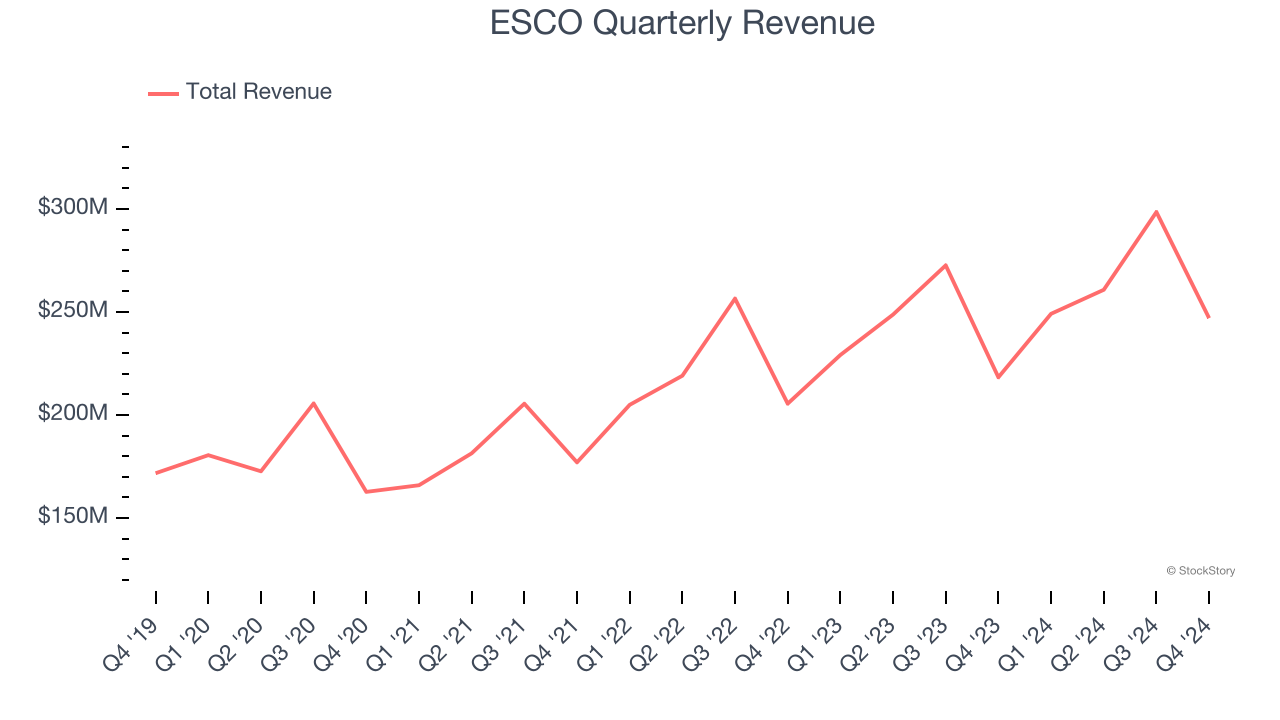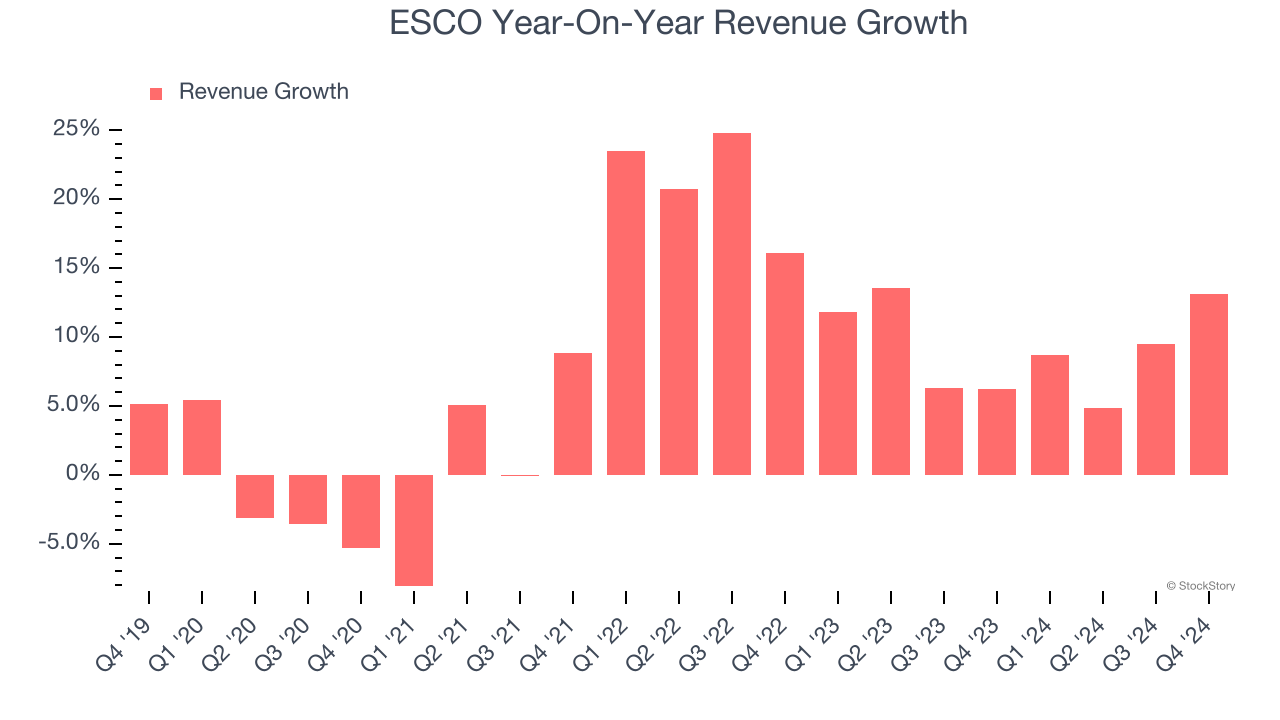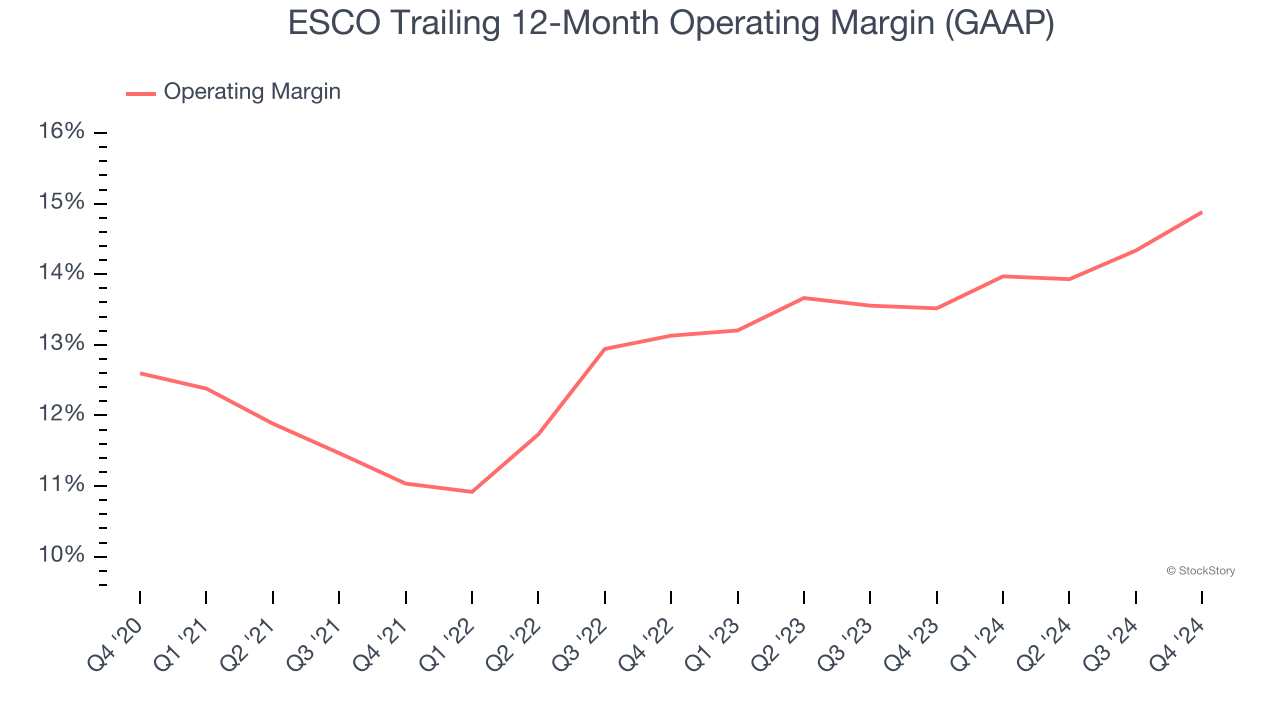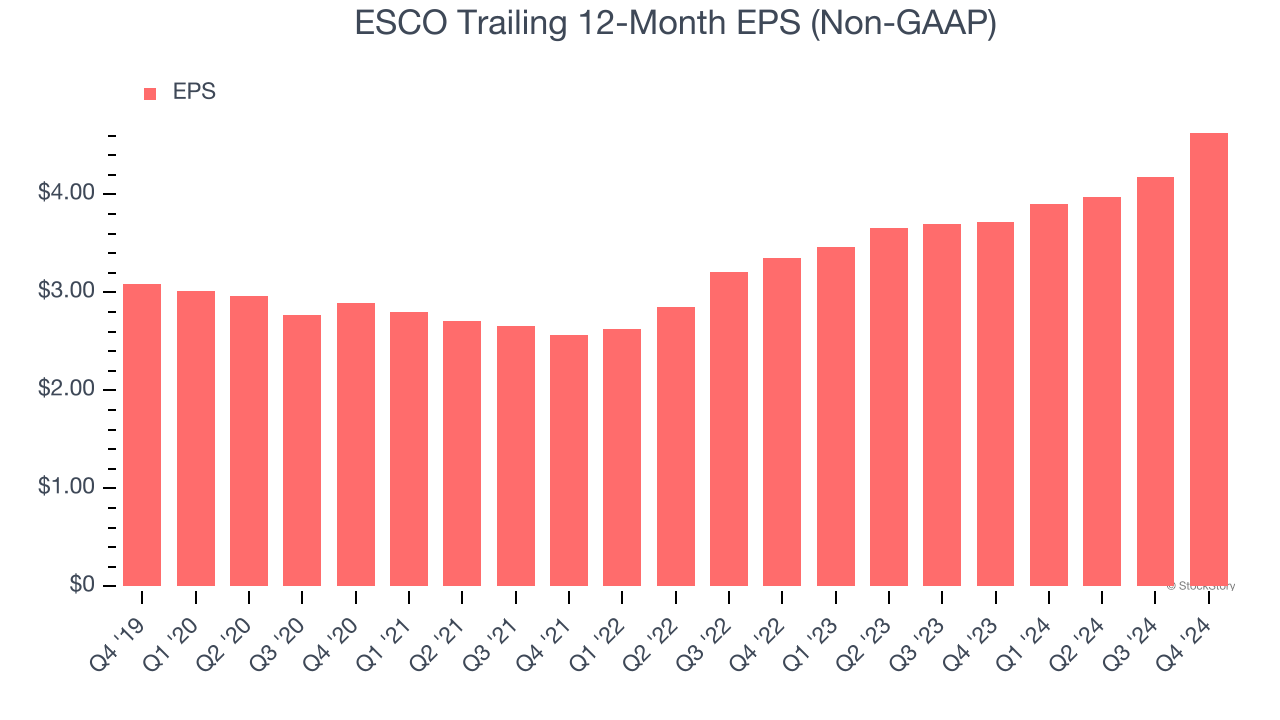
Engineered products manufacturer ESCO (NYSE: ESE) announced better-than-expected revenue in Q4 CY2024, with sales up 13.2% year on year to $247 million. Its non-GAAP profit of $1.07 per share was 47.1% above analysts’ consensus estimates.
Is now the time to buy ESCO? Find out by accessing our full research report, it’s free.
ESCO (ESE) Q4 CY2024 Highlights:
- Revenue: $247 million vs analyst estimates of $240.4 million (13.2% year-on-year growth, 2.8% beat)
- Adjusted EPS: $1.07 vs analyst estimates of $0.73 (47.1% beat)
- Adjusted EBITDA: $46.01 million vs analyst estimates of $42.51 million (18.6% margin, 8.2% beat)
- Management raised its full-year Adjusted EPS guidance to $5.65 at the midpoint, a 17.7% increase
- Operating Margin: 13%, up from 10.2% in the same quarter last year
- Free Cash Flow Margin: 15.9%, up from 0.4% in the same quarter last year
- Backlog: $906.9 million at quarter end
- Market Capitalization: $3.45 billion
Bryan Sayler, Chief Executive Officer and President, commented, “Our fiscal year got off to an outstanding start as we delivered 13 percent top line growth, over 200 basis points of Adjusted EBITDA margin expansion, and a 41 percent increase in Adjusted EPS compared to the prior year. All three segments delivered solid revenue growth, highlighted by notable strength across our Navy, commercial aerospace and utility end-markets. It was also great to see our Test business deliver a solid quarter with improving order flow, double digit revenue growth, and over 500 basis points of margin expansion.
Company Overview
A developer of the communication systems used in the Batmobile of “The Dark Knight,” ESCO (NYSE: ESE) is a provider of engineered components for the aerospace, defense, and utility sectors.
Engineered Components and Systems
Engineered components and systems companies possess technical know-how in sometimes narrow areas such as metal forming or intelligent robotics. Lately, automation and connected equipment collecting analyzable data have been trending, creating new demand. On the other hand, like the broader industrials sector, engineered components and systems companies are at the whim of economic cycles. Consumer spending and interest rates, for example, can greatly impact the industrial production that drives demand for these companies’ offerings.
Sales Growth
A company’s long-term sales performance signals its overall quality. Even a bad business can shine for one or two quarters, but a top-tier one grows for years. Over the last five years, ESCO grew its sales at a decent 7.5% compounded annual growth rate. Its growth was slightly above the average industrials company and shows its offerings resonate with customers.

We at StockStory place the most emphasis on long-term growth, but within industrials, a half-decade historical view may miss cycles, industry trends, or a company capitalizing on catalysts such as a new contract win or a successful product line. ESCO’s annualized revenue growth of 9.1% over the last two years is above its five-year trend, suggesting its demand recently accelerated. 
This quarter, ESCO reported year-on-year revenue growth of 13.2%, and its $247 million of revenue exceeded Wall Street’s estimates by 2.8%.
Looking ahead, sell-side analysts expect revenue to grow 14.3% over the next 12 months, an improvement versus the last two years. This projection is commendable and implies its newer products and services will catalyze better top-line performance.
Unless you’ve been living under a rock, it should be obvious by now that generative AI is going to have a huge impact on how large corporations do business. While Nvidia and AMD are trading close to all-time highs, we prefer a lesser-known (but still profitable) stock benefiting from the rise of AI. Click here to access our free report one of our favorites growth stories.
Operating Margin
Operating margin is a key measure of profitability. Think of it as net income - the bottom line - excluding the impact of taxes and interest on debt, which are less connected to business fundamentals.
ESCO has been an efficient company over the last five years. It was one of the more profitable businesses in the industrials sector, boasting an average operating margin of 13.2%. This result isn’t surprising as its high gross margin gives it a favorable starting point.
Analyzing the trend in its profitability, ESCO’s operating margin rose by 2.3 percentage points over the last five years, as its sales growth gave it operating leverage.

In Q4, ESCO generated an operating profit margin of 13%, up 2.8 percentage points year on year. The increase was encouraging, and since its operating margin rose more than its gross margin, we can infer it was recently more efficient with expenses such as marketing, R&D, and administrative overhead.
Earnings Per Share
We track the long-term change in earnings per share (EPS) for the same reason as long-term revenue growth. Compared to revenue, however, EPS highlights whether a company’s growth is profitable.
ESCO’s decent 8.4% annual EPS growth over the last five years aligns with its revenue performance. This tells us its incremental sales were profitable.

Like with revenue, we analyze EPS over a shorter period to see if we are missing a change in the business.
ESCO’s two-year annual EPS growth of 17.6% was fantastic and topped its 9.1% two-year revenue growth.
In Q4, ESCO reported EPS at $1.07, up from $0.62 in the same quarter last year. This print easily cleared analysts’ estimates, and shareholders should be content with the results. Over the next 12 months, Wall Street expects ESCO’s full-year EPS of $4.63 to grow 6.2%.
Key Takeaways from ESCO’s Q4 Results
We were impressed by ESCO’s optimistic EPS guidance for next quarter, which beat analysts’ expectations. We were also excited its EPS outperformed Wall Street’s estimates by a solid margin. Zooming out, we think this quarter featured some important positives. The stock traded up 2.7% to $135.89 immediately after reporting.
ESCO may have had a good quarter, but does that mean you should invest right now? If you’re making that decision, you should consider the bigger picture of valuation, business qualities, as well as the latest earnings. We cover that in our actionable full research report which you can read here, it’s free.





